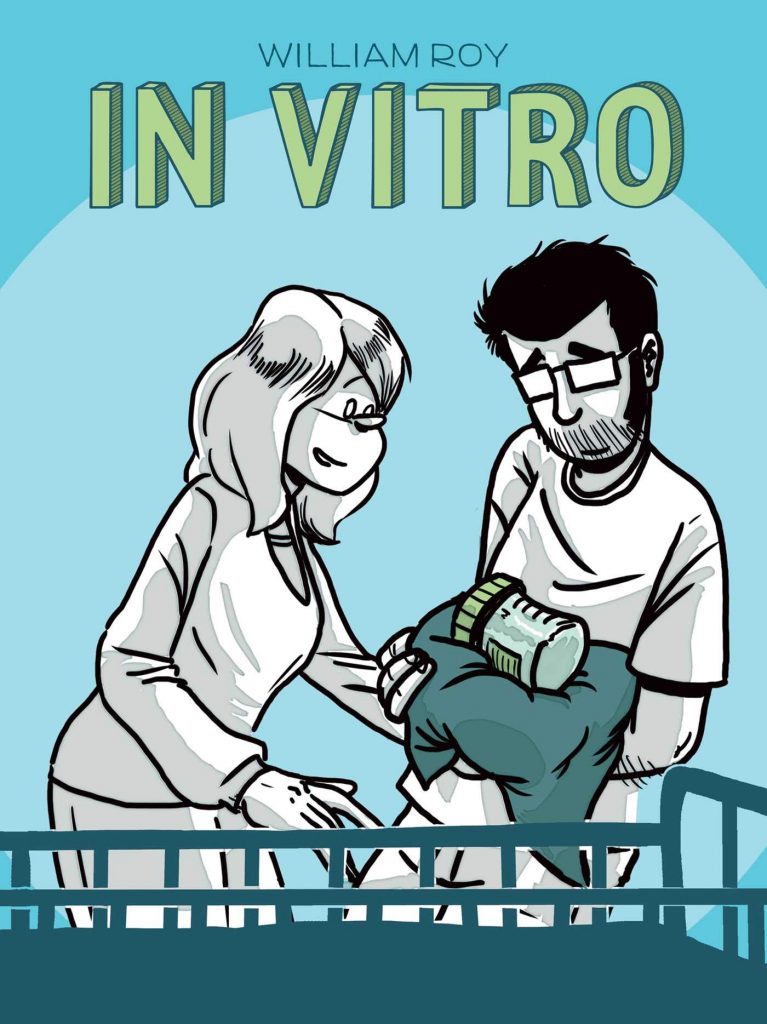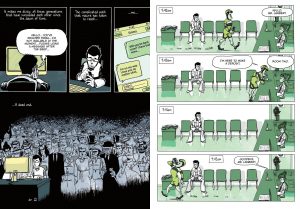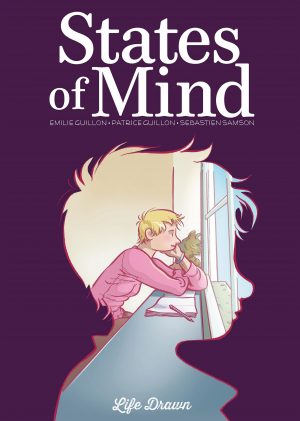Review by Ian Keogh
Autobiography and personal experiences have long been a thriving genre supplying American graphic novels, but if the same applies in Europe then very few appear to have been translated (see recommendations). With the exception of Epileptic, even those lack William Roy’s directness in confronting the problems he and his wife have conceiving.
As seen in the neatly creative sample art featuring his ancestors, Roy discovers early that the problem lies with him, and the remainder of In Vitro concerns his coming to terms with that, the alternative solutions, and Roy’s difficult relationship with his own father. Despite these all being heavyweight subjects, Roy applies a light touch that doesn’t trivialise the issues, yet ensures his story entertains as well as educates. He begins with his disappointing discovery, and moves through the process of in vitro fertilisation, taking sperm for creating life and uniting it with eggs outside the body, then implanting those eggs. An early lesson is the stigma and embarrassment to be overcome in a clinic where everyone present is there for similar reasons.
The light touch applied to explanations is also present in the cartooning, with Roy showing himself at his day job as a TV editor, indicating a natural inclination to engaging forms of telling a story. His art is simple, but good at defining personalities, with a broad range of expressions allocated to his own caricature as he experiences trials beyond the stress of IVF. Because the art is devoted to the storytelling it takes a pause to realise just how accomplished it is, with the emotions spot on, detail when needed and a good sense of pacing.
Plenty of readers will know someone who’s gone through IVF without understanding fully just what a trial it is, and that it’s something couples are likely to have to endure multiple times before success. It’s well explained here, and will give many readers pause for thought about how fortunate they’ve been in the genetic lottery. Self-doubt, guilt and fear are all part of the package. It’s a scary process not made any more comfortable in Roy’s case by a succession of doctors for whom he and his wife are just another in an endless cycle of couples, and who’ve forgotten the concerns of the individuals. An additional pressure is administrative incompetence, such as appointments made months in advance for public holidays when no-one will be working, so delaying what to Roy and his wife is their abiding priority. Frustrating doesn’t begin to cover the delays. Spread between them are recollections of Roy’s awkward relationship with his birth father who’s decided to make contact again after twenty years.
In Vitro is an extremely readable explanation of a difficult subject, the heavy emotional investment related along with the scientific complexities to provide a graphic novel that should have a far wider audience than those unable to have children without assistance.





